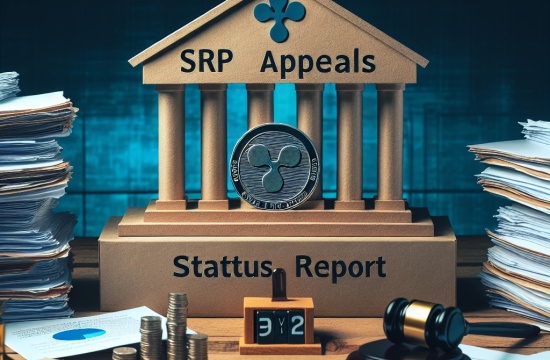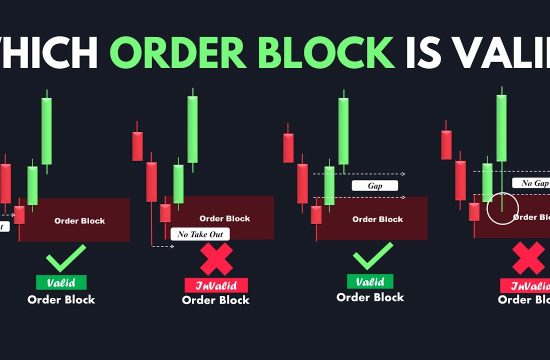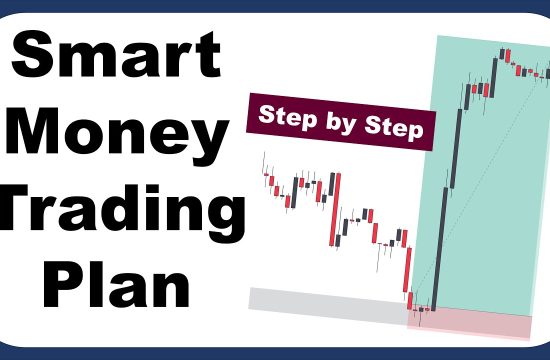Understanding Market Trends
Keep an Eye on News Influences
When it comes to Bitcoin trading, one of the biggest lessons I’ve learned is to always keep an eye on the news. Whether it’s regulatory changes or technological advancements, the crypto market is heavily influenced by what’s happening in the world. For instance, a major news update about countries adopting Bitcoin can cause significant price changes almost immediately.
This means you need to have a strategy in place that accommodates sudden news impacts. I often check news outlets or reliable crypto websites multiple times a day. You’d be surprised how quickly you can gain an edge just by being aware of what’s being reported.
One good practice is to set up Google Alerts for Bitcoin and other cryptocurrencies you’re interested in. This way, you can get timely notifications on news that might affect your portfolios without having to dig through tons of headlines every day.
Technical Analysis Basics
Now, on the flip side, technical analysis is a crucial part of my trading toolkit. Understanding how to read charts can make a world of difference. It’s like having a map before you go hiking – without it, you might get lost! Basic indicators like moving averages, RSI (Relative Strength Index), and MACD (Moving Average Convergence Divergence) are things I rely on to gauge price action.
When I’m analyzing charts, I don’t just look at them for pretty colors or patterns. I take time to understand what they are indicating about potential future movements. This way, I can position myself correctly ahead of upcoming trends.
Don’t be overwhelmed if you’re new to technical analysis. There are plenty of resources, tutorials, and even apps that can help you learn and apply these techniques. Practice makes perfect, and over time you’ll develop a keen instinct for reading the market.
Understanding Market Sentiment
Lastly, gauging market sentiment can sometimes feel like trying to catch smoke with your bare hands. But here’s the truth: when you understand how other traders feel about the market, you can predict movements more accurately. Tools like Twitter, Reddit, and Telegram can provide insight into the morale of the trading community.
I’ve found that participating in discussions can help shape my own views. Often, hearing someone else’s perspective can illuminate things I hadn’t considered, or even validate my own thoughts about a trading move.
One thing to note: don’t solely rely on sentiment; it should complement your technical analysis. After all, the crowd can sometimes be wrong. Balancing your insights with hard data will make you a more savvy trader.
Effective Risk Management Strategies
Setting Stop-Loss Orders
This is where I really stress the importance of risk management. Set your stop-loss orders as soon as you initiate a trade. It’s like wearing a safety belt in a car – you may never need it, but when you do, you’ll be really glad you did! A good rule of thumb is to set your stop-loss at a percentage loss you’re comfortable with before entering a position.
Many traders, including myself in the past, get caught up in the moment and forget to set these safeguards. I’ve had times where I watched profits evaporate because I didn’t set a stop-loss. Trust me, it’s a tough lesson to learn.
By ensuring you have these protections in place, you can trade with confidence, knowing that you’ve limited your potential losses and can focus on your trading strategy without getting emotionally bogged down in the process.
Diversifying Your Portfolio
Don’t put all your eggs in one basket – I can’t stress this enough! Diversifying my crypto portfolio was key to weathering the ups and downs of the market. I spread my investments across Bitcoin, altcoins, and even some stablecoins to balance my risk.
This approach helps cushion the blow when a particular asset doesn’t perform as expected. It’s like having a safety net that allows you to breathe a bit easier during market downturns. One major thing I’ve come to realize is that the crypto market is volatile, and having a diversified portfolio can keep me from losing my sanity when the prices dip.
Always do your research before diving into altcoins, though. Some projects can seem promising but don’t have solid fundamentals. The more informed you are, the better diversified you can be while ensuring you’re making smart investments.
Regularly Reassess Your Positions
Life’s busy – I get that. But to truly succeed in Bitcoin trading, you need to have a habit of regularly reassessing your positions. I take some time each week to go through my portfolio, analyzing what’s working and what’s not. This reflective practice allows me to adjust my strategy based on current market conditions.
Sometimes, the trade decisions I made a few months back might not hold water anymore. Market dynamics shift rapidly, and what might have seemed like a solid investment could now be a liability. Taking stock of your positions helps prevent future losses.
In these assessments, I also look for opportunities to scale into successful investments or pull back from underperformers. It’s important to stay flexible and recognize that your strategy is always evolving with the market.
Emotional Discipline in Trading
Controlling Your Emotions
One of the hardest parts about trading, for me, has been managing my emotions. There are days when you feel like a genius and other days when you question every single decision you’ve ever made. But understanding that emotions can cloud judgment is a fundamental part of being successful in Bitcoin trading.
I recommend keeping a trading journal to track not just your trades but also your feelings about them. Being able to reflect on my emotional responses has helped me make better decisions and avoid impulsive trades out of fear or greed.
Whenever I feel overwhelmed, I take a step back and remind myself of my long-term goals. Embracing a mindset of patience and discipline can drastically improve your trading outcomes.
Setting Realistic Goals
When I first started trading Bitcoin, I made the rookie mistake of setting unrealistic profit expectations. This led to frustration and rash decisions. Now, I always set achievable short-term and long-term goals. It keeps me focused and motivated without setting myself up for disappointment.
Setting small milestones along the way provides positive reinforcement and encourages me to stay disciplined. For example, aiming for a specific percentage increase each month gives me something tangible to work toward without being too overwhelming.
Remember, slow and steady wins the race in this market. It’s better to make consistent, smaller gains rather than aiming for the stars and risking losing significant capital due to emotional trading.
Learning from Mistakes
We all mess up, and as much as I hate admitting it, I’ve had my fair share of losses in trading. But guess what? Those losses are some of the most valuable learning experiences I’ve encountered. Reflecting on what went wrong has been crucial to my growth as a trader.
I take time to analyze my past trades, especially the unsuccessful ones. What was my reasoning? Were there external factors I missed? By acknowledging and learning from these mistakes, I’m better equipped to make smarter decisions in the future.
Create a culture of learning rather than blaming yourself for losses. Each mistake, when properly analyzed, can be reframed as a stepping stone to becoming a more knowledgeable and successful trader.
Utilizing the Right Tools and Resources
Choosing the Right Exchanges
Finding the right exchange can feel like a daunting task, but it’s such a critical step in successful trading! I remember spending days researching the most reliable platforms and settled on a few that combine user-friendliness with robust security features. It’s essential to choose one that aligns with your specific trading needs.
Make sure the exchange you pick has good liquidity. Trading on an exchange with low volume can mean slippage and poor execution prices. You don’t want to be trapped in a trade that doesn’t go smoothly because the platform can’t handle the volume.
Also, consider transaction fees. High fees can eat into your profits. I always weigh the benefits versus costs before making any moves. A little research upfront can save you a bundle in the long run.
Leveraging Analysis Tools
Mistakes can happen more often than I’d like to admit, but that’s where analysis tools come in handy. Platforms that provide various analyses, charts, and indicators have significantly improved my decisions. After I started using a couple of these tools, I’ve noted a marked improvement in the quality of my trades.
Many platforms offer trial versions, which are great because they let you gauge what works best for you without a financial commitment. Play around with different tools until you find the ones that help you understand market movements best.
Knowledge is power, especially in the fast-paced world of Bitcoin trading. The right tools can provide insights that lead to fresher perspectives and improved strategies, greatly increasing your chances of success.
Continuous Learning
Finally, never underestimate the power of continuous learning. The crypto world changes fast, and staying updated is key. I regularly read trading books, attend webinars, and listen to podcasts to keep my skills sharp. This influx of information adds to my confidence and keeps me on my toes in an ever-evolving game.
Surrounding myself with knowledgeable traders and engaging in communities has also paved the way for plenty of enlightening discussions that I wouldn’t have otherwise encountered. Everyone has something to teach, and sharing experiences only makes us all better traders.
So, get out there! Join forums, read, watch, and immerse yourself in all things crypto. Building a strong knowledge base is one of the most powerful tools in your trading arsenal.
Conclusion
Bitcoin trading is an exciting journey filled with ups and downs. By understanding market trends, applying effective risk management strategies, maintaining emotional discipline, and utilizing the right tools, you can position yourself to sustain profits over time. Remember, every trader has a unique path. Stick to what you learn, be adaptable, and enjoy the ride!
FAQ
1. What is the most important thing to consider when trading Bitcoin?
The most crucial aspect is understanding market trends. Being aware of news and technical indicators can help you make more informed trading decisions.
2. How can I manage my risk effectively in Bitcoin trading?
Setting stop-loss orders is a vital risk management strategy. Additionally, diversifying your portfolio can help mitigate losses.
3. Why is emotional discipline so essential in trading?
Trading is often driven by emotion, and losing control can lead to rash decisions. Maintaining emotional discipline ensures that your trading strategy remains intact even during market volatility.
4. Are there specific tools you recommend for Bitcoin trading?
Finding the right exchange and leveraging analysis tools are essential. Many traders benefit from platforms that offer real-time data and charting capabilities.
5. How can I continuously improve my trading skills?
Engaging in continuous learning through books, webinars, and forums is vital. Surrounding yourself with knowledgeable individuals can introduce you to new strategies and perspectives.
Related Content
- DPA Token (DPAT) and Blockchain Technology: The Key to Unlocking Africa’s Economic Potential
- The Impact of Global Events on Bitcoin Prices
- Sanctions, Disagreements Hamper Regulation of Crypto Mining in Russia, Experts Say
- Bitcoin, Ethereum Technical Analysis: BTC, ETH Move Higher Ahead of US Inflation Report
- Bitcoin & Public Health: Addressing the Debt-Money Crises









